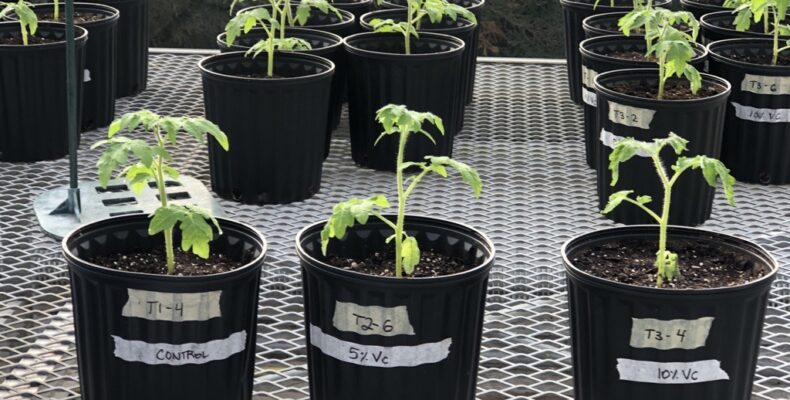Canadian Nuclear Labs worked with GTN’s University of Windsor to power greenhouse food production with Small Modular Reactors (SMRs).
Evaluation of leachate from selected biochar blend rates with commercial greenhouse media

Biochar has been proven to be beneficial to agricultural operations by capturing nutrients in the soil and providing these nutrients back to the crops. Before biochar is to be used successfully as a soilless greenhouse media enhancement, its blend rate must first be determined, and this is why Walker tapped into HESIC’s expertise to help investigate this innovation challenge.
Evaluating the effects of biochar-amended media on fertilization and growth of basil and gerberas in a greenhouse setting

Before biochar is to be used successfully as a soilless greenhouse media enhancement, its blend rate must first be determined, and this is why Walker tapped into HESIC’s expertise to help investigate this innovation challenge.
The future of automation: Building a mushroom harvesting virtual environment

Sinopa Energy Inc. partnered with Agriculture at UWindsor to develop the model to simulate the current state in the mushroom farm, investigate a potential future fully automated state, and collaborative scenarios.
Assessing the performance of a novel climate optimization software in commercial Ontario floral and cucumber greenhouses

The novel climate optimization software developed by 360 Energy Inc. utilizes the data generated from the climate control system that is currently installed within the greenhouse. A collaborative research project between HESIC and 360 Energy Inc. involved two participating commercial greenhouses that systematically evaluated this proprietary software. Read more to learn about the team’s solution.
Using research to advance understanding of a novel soil amendment from a Canadian small business
IZC wanted to understand zeolite-based NEREA® substrate with respect to labour, economics and plant growth. They turned to Niagara College to compare the growth of basil with NEREA® as an amendment through a course-based project.
Evaluating a novel indoor compost product as an organic fertilizer to grow diverse crops in a greenhouse

The objective of Phase 1 of this project was to evaluate the potential of the product of VCycene’s intelligent composting device to be classified as a mature compost, as per the Canadian Council of Ministers of the Environment‘s (CCME) Guidelines for Compost Quality. Niagara College’s Horticultural & Environmental Sciences Innovation Centre (HESIC) team generated, and subsequently evaluated, product from alpha versions of VCycene’s composting device.
New Pao Tau is growing research-backed orchids for the masses

While orchids are commonly grown in bark-based substrates, New Pao Tau is taking an innovative approach by using newer substrates with better water holding and release capacity than the typical bark-based substrates. Vineland Research and Innovation was able to take on this research project to help Michael and the New Pao Tau team identify the substrate best suited for the consumer market and find a solution that would result in increased customer satisfaction.
Greenhouse technologies support untapped local food source and crop improvements

Fiddleheads are a nutritious and delicious spring delicacy in Ontario, but they are only available for a few weeks each year. The young leaves of the ostrich fern (Matteuccia struthiopteris L. Todaro), fiddleheads are harvested from wild populations of ostrich ferns which limits availability, market growth, and research opportunities. Norcliff Farms Inc. turned to Controlled Environment Systems Research Facility (CESRF) to investigate.
New vermichar technology top performer when compared against soluble chemical fertilizer

Terra Optima Labs Inc. (Terra Optima) has created a circular system which can divert food wastes from landfills and process it into natural soil amendments, fertilizers, and food, using natural organisms. They turned to the Horticultural & Environmental Sciences Innovation (HESIC) team to help them run reliable growth trials.
